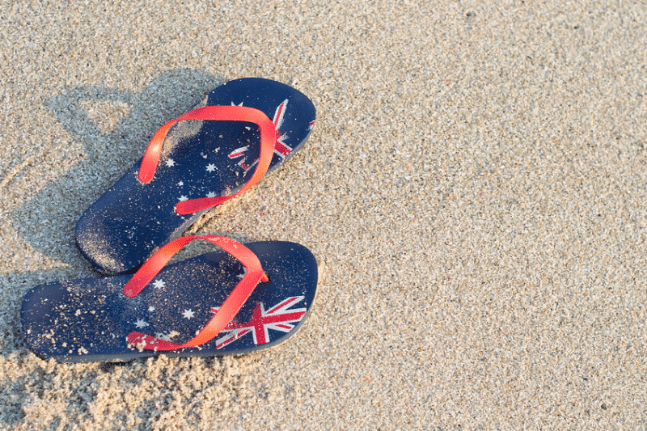When fashion is bad for our health – part 2
In one of my last posts, I spoke about how high heels, corsets and handbags could potentially cause aches and pains or injuries. Well, they’re not the only hazardous fashion that we endure regularly!
- Thongs (Yes, I’m Australian. Jandals if you’re a Kiwi, or flip flops if you’re from anywhere else!)
Whatever you call them, these little rubber monstrosities that are staple of summer can wreak havoc on our feet.
Often, we don’t have amazing strength in the soles of our feet because we spend so much time in shoes these days. When we switch from supportive shoes to thongs, it can stress out the muscles that hold up our arches, leading to pain or inflammation.
When we switch from supportive shoes to thongs, it can stress out the muscles that hold up our arches, leading to pain or inflammation.
Thongs are actually far worse for our feet than going barefoot. When we wear thongs, our toes have to claw into the rubber to stop the shoe from falling off, meaning that we aren’t able to use our big toe the way it was designed to be used – as a propellor for stepping forward. Think about it – our big to is the last part of our foot to leave the ground as we step forward, so it needs to be nice and relaxed in order to do so. If we’re scrunching it into our thong to keep it on our foot, it doesn’t allow us to walk properly. This can cause aches and pains in ankles, legs, knees and hips.
- Ill-fitting bras
Ladies, bras are fantastic for our bodies if used correctly. If used incorrectly, they can cause more harm than they prevent!
Breasts come in all shapes and sizes, therefore every woman will require a different bra. Larger busted women may notice that they get upper back or shoulder pain, especially if they work in a job which require long hours at a desk.
The reason for this is that larger breasts can weigh a significant amount, which encourages slouching and rolling in of shoulders. This puts strain upper backs and necks, which over time can cause fatigue in those muscles and sometimes pain.
Whilst I will always discuss ways in which appropriate exercise and stretching can assist patient with this problem, a correctly fitting bra can be a bit of a miracle for this particular group of people.
Bras are designed to spread the weight of their luggage evenly across our shoulders, ribs and backs, reducing the strain on any one area. If straps are too loose, too thin or too tight, weight will tend to fall in one area only.
Additionally, if the cups are too small, too much of the load will remain at the front of our bodies rather than being spread across our ribs, and if the cups are too big, we might be putting our breast tissue at risk of damage.
Don’t be embarrassed – get fitted! It might be the best thing you’ve done so far for your annoying upper back pain.
- Tight pants
You might remember the unfortunate injury earlier in the year when a woman developed compartment syndrome from squatting for too long in skinny jeans. If you don’t remember, you can read about it here.
The reason that tight fitting pants can potentially cause problems, is that they restrict blood and lymphatic flow.
In order to keep us alive, or arteries pump blood away from our heart (down our legs) and our veins bring the blood back to our heart (up our legs). Our veins are more squishy than our arteries, thus can potentially be compressed and blocked by wearing tight clothing. This causes the blood to become trapped in our extremities (lower legs and feet in this case) causing swelling and pain.
If you’re wearing tight pants – common sense should apply. If they’re tight and restrictive, make it difficult to breathe or flex your calf muscles, then they’re probably too tight. Opt for something with a little bit more stretch and wiggle room, and you’ll probably be just fine.
Until next time!
Claire










